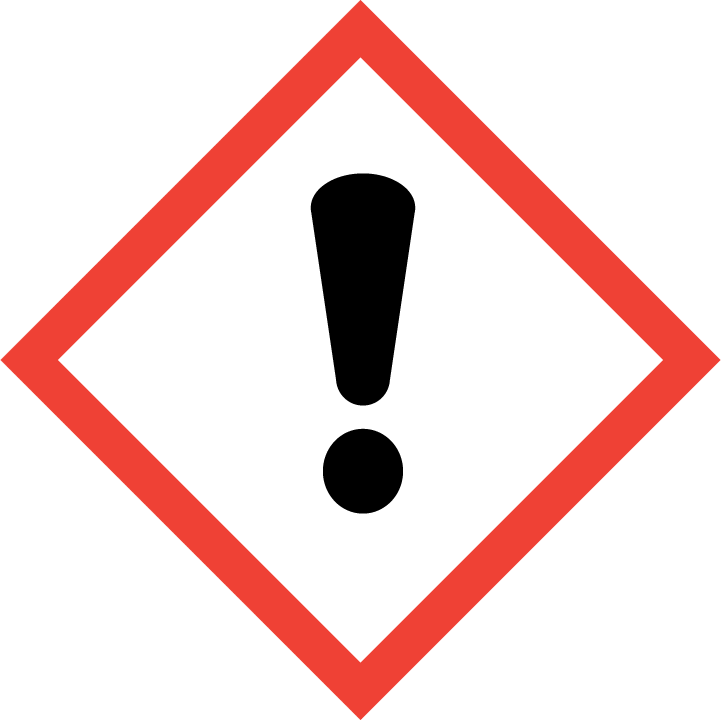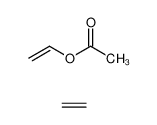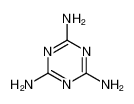| Product name | Dichlorodifluoromethane |
|---|
| Product number | - |
|---|---|
| Other names | dichloro difluoro methane |
| Identified uses | For industry use only. Food Additives: FREEZING_AGENT; PROPELLANT |
|---|---|
| Uses advised against | no data available |
| Company | MOLBASE (Shanghai) Biotechnology Co., Ltd. |
|---|---|
| Address | Floor 4 & 5, Building 12, No. 1001 North Qinzhou Road, Xuhui District, Shanghai, China |
| Telephone | +86(21)64956998 |
| Fax | +86(21)54365166 |
| Emergency phone number | +86-400-6021-666 |
|---|---|
| Service hours | Monday to Friday, 9am-5pm (Standard time zone: UTC/GMT +8 hours). |
Hazardous to the aquatic environment, long-term (Chronic) - Category Chronic 3
Hazardous to the ozone layer, Category 1
2.2 GHS label elements, including precautionary statements| Pictogram(s) |  |
|---|---|
| Signal word | Danger |
| Hazard statement(s) | H412 Harmful to aquatic life with long lasting effects H420 Harms public health and the environment by destroying ozone in the upper atmosphere |
| Precautionary statement(s) | |
| Prevention | P273 Avoid release to the environment. |
| Response | none |
| Storage | none |
| Disposal | P501 Dispose of contents/container to ... P502 Refer to manufacturer or supplier for information on recovery or recycling |
none
3.Composition/information on ingredients 3.1 Substances| Chemical name | Common names and synonyms | CAS number | EC number | Concentration |
|---|---|---|---|---|
| Dichlorodifluoromethane | Dichlorodifluoromethane | 75-71-8 | none | 100% |
Consult a physician. Show this safety data sheet to the doctor in attendance.
If inhaledFresh air, rest. Artificial respiration may be needed. Refer for medical attention.
In case of skin contactON FROSTBITE: rinse with plenty of water, do NOT remove clothes. Refer for medical attention .
In case of eye contactFirst rinse with plenty of water for several minutes (remove contact lenses if easily possible), then refer for medical attention.
If swallowedNever give anything by mouth to an unconscious person. Rinse mouth with water. Consult a physician.
4.2 Most important symptoms/effects, acute and delayedINHALATION: some narcosis when 10% in air is breathed. (USCG, 1999)
4.3 Indication of immediate medical attention and special treatment needed, if necessaryVictims of Freon inhalation require management for hypoxic, CNS anesthetic, and cardiac symptoms. Patients must be removed from the exposure environment, and high-flow supplemental oxygen should be utilized. The respiratory system should be evaluated for injury, aspiration, or pulmonary edema and treated appropriately. CNS findings should be treated supportively. A calm environment with no physical exertion is imperative to avoid increasing endogenous adrenegic levels. Exogenous adrenergic drugs must not be used to avoid inducing sensitized myocardial dysrhythmias. Atropine is ineffective in treating bradyarrhythmias. For ventricular dysrhythmias, diphenylhydantoin and countershock may be effective. Cryogenic dermal injuries should be treated by water bath rewarming at 40 to 42°C until vasodilatory flush has returned. Elevation of the limb and standard frostbite management with late surgical debridement should be utilized. Ocular exposure requires irrigation and slit-lamp evaluation for injury. /Freons/
5.Fire-fighting measures 5.1 Extinguishing media Suitable extinguishing mediaIf material involved in fire: Extingiush fire using agent suitable for type of surrounding fire. (Material itself does not burn or burns with difficulty). Cool all affected containers with flooding quantities of water. Apply water from as far a distance as possible.
5.2 Specific hazards arising from the chemicalSpecial Hazards of Combustion Products: Although nonflammable, dissociation products generated in a fire may be irritating or toxic. Behavior in Fire: Helps extinguish fire. (USCG, 1999)
5.3 Special protective actions for fire-fightersWear self-contained breathing apparatus for firefighting if necessary.
6.Accidental release measures 6.1 Personal precautions, protective equipment and emergency proceduresUse personal protective equipment. Avoid dust formation. Avoid breathing vapours, mist or gas. Ensure adequate ventilation. Evacuate personnel to safe areas. Avoid breathing dust. For personal protection see section 8.
6.2 Environmental precautionsVentilation.
6.3 Methods and materials for containment and cleaning upIf dichlorodifluoromethane is leaked ... ventilate area of spill or leak to disperse gas. ... Stop flow of gas.
7.Handling and storage 7.1 Precautions for safe handlingAvoid contact with skin and eyes. Avoid formation of dust and aerosols. Avoid exposure - obtain special instructions before use.Provide appropriate exhaust ventilation at places where dust is formed. For precautions see section 2.2.
7.2 Conditions for safe storage, including any incompatibilitiesSeparated from incompatible materials. See Chemical Dangers. Cool. Ventilation along the floor.Separated from incompatible materials. ... Cool. Ventilation along the floor.
8.Exposure controls/personal protection 8.1 Control parameters Occupational Exposure limit valuesRecommended Exposure Limit: 10 Hour Time-Weighted Average: 1,000 ppm (4950 mg/cu m).
Biological limit valuesno data available
8.2 Appropriate engineering controlsHandle in accordance with good industrial hygiene and safety practice. Wash hands before breaks and at the end of workday.
8.3 Individual protection measures, such as personal protective equipment (PPE) Eye/face protectionSafety glasses with side-shields conforming to EN166. Use equipment for eye protection tested and approved under appropriate government standards such as NIOSH (US) or EN 166(EU).
Skin protectionWear impervious clothing. The type of protective equipment must be selected according to the concentration and amount of the dangerous substance at the specific workplace. Handle with gloves. Gloves must be inspected prior to use. Use proper glove removal technique(without touching glove's outer surface) to avoid skin contact with this product. Dispose of contaminated gloves after use in accordance with applicable laws and good laboratory practices. Wash and dry hands. The selected protective gloves have to satisfy the specifications of EU Directive 89/686/EEC and the standard EN 374 derived from it.
Respiratory protectionWear dust mask when handling large quantities.
Thermal hazardsno data available
9.Physical and chemical properties| Physical state | colourless odourless gas |
|---|---|
| Colour | Colorless gas ... [Note: Shipped as a liquified compressed gas] |
| Odour | Practically odorless ... faint, ether-like odor in high concentration |
| Melting point/ freezing point | -158ºC |
| Boiling point or initial boiling point and boiling range | -29.79ºC |
| Flammability | Nonflammable GasNot combustible. Gives off irritating or toxic fumes (or gases) in a fire. |
| Lower and upper explosion limit / flammability limit | no data available |
| Flash point | 11ºC |
| Auto-ignition temperature | Not flammable (USCG, 1999) |
| Decomposition temperature | no data available |
| pH | no data available |
| Kinematic viscosity | 0.262 centipoise at 70 deg F |
| Solubility | In water:Insoluble. 0.028 g/100 mL |
| Partition coefficient n-octanol/water (log value) | log Kow = 2.16 |
| Vapour pressure | 5 atm at 16.11°C |
| Density and/or relative density | 1.329 |
| Relative vapour density | 4.1 (Air = 1) |
| Particle characteristics | no data available |
no data available
10.2 Chemical stabilityStable up to 550°C.
10.3 Possibility of hazardous reactionsNONFLAMMABLE GASThe gas is heavier than air and may accumulate in lowered spaces causing a deficiency of oxygen.The reaction of aluminum with various halogenated hydrocarbons produces a self-sustaining reaction with sufficient heat to melt aluminum pieces, examples of other halogenated hydrocarbons are fluorotrichloromethane, dichlorodifluoromethane, chlorodifluoromethane, tetrafluoromethane. The vigor of the reaction appears to be dependent on the combined degree of fluorination and the vapor pressure, [Chem. Eng. News 39(27):44(1961)].
10.4 Conditions to avoidno data available
10.5 Incompatible materialsChemically-active metals such as sodium, potassium, calcium, powdered aluminum, zinc and magnesium.
10.6 Hazardous decomposition productsWhen heated to decomp it emits highly toxic fumes of phosgene and /hydrogen chloride and hydrogen fluoride/.
11.Toxicological information Acute toxicity- Oral: LD50 Rat single oral >1 g/kg
- Inhalation: LD50 Mouse inhalation 760,000 ppm/30 min
- Dermal: no data available
no data available
Serious eye damage/irritationno data available
Respiratory or skin sensitizationno data available
Germ cell mutagenicityno data available
CarcinogenicityA4: Not classifiable as a human carcinogen.
Reproductive toxicityno data available
STOT-single exposureno data available
STOT-repeated exposureno data available
Aspiration hazardno data available
12.Ecological information 12.1 Toxicity- Toxicity to fish: no data available
- Toxicity to daphnia and other aquatic invertebrates: no data available
- Toxicity to algae: no data available
- Toxicity to microorganisms: no data available
AEROBIC: No evidence of dichlorodifluoromethane biodegradation was found in a microcosm designed to simulate Narragansett Bay in a month-long experiment(1). Dichlorodifluormethane was not biodegraded in soil samples from the Skellinggsted Landfall, Holbaek, Denmark(2). The soil at the site was a loamy sand - 5.7% silt, 88.1% sand, 5.3% gravel; 3.2% w/w organic content, 25% w/w moisture content(2).
12.3 Bioaccumulative potentialAn estimated BCF of 12 was calculated in fish for dichlorodifluoromethane(SRC), using a log Kow of 2.16(1) and a regression-derived equation(2). According to a classification scheme(3), this BCF suggests the potential for bioconcentration in aquatic organisms is low(SRC).
12.4 Mobility in soilThe Koc of dichlorodifluoromethane is estimated as 75(SRC), using a log Kow of 2.16(1) and a regression-derived equation(2). A Koc of 85 mL/g has also been reported, test conditions not specified(3). According to a classification scheme(4), these Koc values suggest that dichlorodifluoromethane is expected to have high mobility in soil. A log Koc value of 2.05 has been reported, using a batch experiment incubated with methane and a soil water content of 25% w/w(5).
12.5 Other adverse effectsno data available
13.Disposal considerations 13.1 Disposal methods ProductThe material can be disposed of by removal to a licensed chemical destruction plant or by controlled incineration with flue gas scrubbing. Do not contaminate water, foodstuffs, feed or seed by storage or disposal. Do not discharge to sewer systems.
Contaminated packagingContainers can be triply rinsed (or equivalent) and offered for recycling or reconditioning. Alternatively, the packaging can be punctured to make it unusable for other purposes and then be disposed of in a sanitary landfill. Controlled incineration with flue gas scrubbing is possible for combustible packaging materials.
14.Transport information 14.1 UN Number| ADR/RID: UN1028 | IMDG: UN1028 | IATA: UN1028 |
| ADR/RID: DICHLORODIFLUORO- METHANE (REFRIGERANT GAS R 12) |
| IMDG: DICHLORODIFLUORO- METHANE (REFRIGERANT GAS R 12) |
| IATA: DICHLORODIFLUORO- METHANE (REFRIGERANT GAS R 12) |
| ADR/RID: 2.2 | IMDG: 2.2 | IATA: 2.2 |
| ADR/RID: unknown | IMDG: unknown | IATA: unknown |
| ADR/RID: no | IMDG: no | IATA: no |
no data available
14.7 Transport in bulk according to Annex II of MARPOL 73/78 and the IBC Codeno data available
15.Regulatory information 15.1 Safety, health and environmental regulations specific for the product in question| Chemical name | Common names and synonyms | CAS number | EC number |
|---|---|---|---|
| Dichlorodifluoromethane | Dichlorodifluoromethane | 75-71-8 | none |
| European Inventory of Existing Commercial Chemical Substances (EINECS) | Listed. | ||
| EC Inventory | Listed. | ||
| United States Toxic Substances Control Act (TSCA) Inventory | Listed. | ||
| China Catalog of Hazardous chemicals 2015 | Listed. | ||
| New Zealand Inventory of Chemicals (NZIoC) | Listed. | ||
| Philippines Inventory of Chemicals and Chemical Substances (PICCS) | Listed. | ||
| Vietnam National Chemical Inventory | Not Listed. | ||
| Chinese Chemical Inventory of Existing Chemical Substances (China IECSC) | Listed. | ||
| Creation Date | Aug 17, 2017 |
|---|---|
| Revision Date | Aug 17, 2017 |
- CAS: Chemical Abstracts Service
- ADR: European Agreement concerning the International Carriage of Dangerous Goods by Road
- RID: Regulation concerning the International Carriage of Dangerous Goods by Rail
- IMDG: International Maritime Dangerous Goods
- IATA: International Air Transportation Association
- TWA: Time Weighted Average
- STEL: Short term exposure limit
- LC50: Lethal Concentration 50%
- LD50: Lethal Dose 50%
- EC50: Effective Concentration 50%
- IPCS - The International Chemical Safety Cards (ICSC), website: http://www.ilo.org/dyn/icsc/showcard.home
- HSDB - Hazardous Substances Data Bank, website: https://toxnet.nlm.nih.gov/newtoxnet/hsdb.htm
- IARC - International Agency for Research on Cancer, website: http://www.iarc.fr/
- eChemPortal - The Global Portal to Information on Chemical Substances by OECD, website: http://www.echemportal.org/echemportal/index?pageID=0&request_locale=en
- CAMEO Chemicals, website: http://cameochemicals.noaa.gov/search/simple
- ChemIDplus, website: http://chem.sis.nlm.nih.gov/chemidplus/chemidlite.jsp
- ERG - Emergency Response Guidebook by U.S. Department of Transportation, website: http://www.phmsa.dot.gov/hazmat/library/erg
- Germany GESTIS-database on hazard substance, website: http://www.dguv.de/ifa/gestis/gestis-stoffdatenbank/index-2.jsp
- ECHA - European Chemicals Agency, website: https://echa.europa.eu/


































